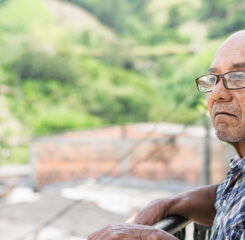Living With COVID: Week 8
This Week’s Highlights:
Volume Fourteen: Air Date 5.9.22. “Living with COVID Down Under”
As you know, sometimes I like to ‘take us on the road’ and learn about how other countries are handling various COVID issues. Today, let’s head to Australia, where they are experiencing some troubling side effects of loosening COVID restrictions.
For a few weeks now, Australia and New Zealand have been trading places as the areas of the world reporting the highest number of new COVID cases. As usually follows, hospitalizations and deaths are also on the rise. The saving grace has been that the country is highly vaccinated, resulting in a decreasing fatality rate, meaning that the proportion of deaths to total cases is moving in the right direction. But still – it also means Australia has a higher proportionate increase in new cases, and a higher absolute number of deaths.
So, what’s going on Down Under – how did they end up here? In an article from the Sydney Morning Herald, Professor Nancy Baxter, head of the School of Population and Global Health at the University of Melbourne, explains that the conversation about COVID had essentially disappeared from the political dialogue, as both parties have motives to ignore the current COVID stats. Neither wants to be accused of proposing a return to lockdowns or other restrictions that have been loosened, such as mask and social distancing mandates, testing and isolation. “Epidemiologist Mike Toole, an associate of Melbourne’s Burnet Institute, said [in the article that] he was astonished that the increase in deaths wasn’t being addressed during the federal election campaign.“
The low rates of childhood vaccination, a lack of acceptance of third / booster shots, and the related mask and isolation restrictions have all contributed to this peak rise in new cases. The fear too is that Australians will not be willing to mask, social distance, test or isolate again, now that they’ve had a taste of ‘the return to normal life.’ Additionally, the article features stories and stats on vulnerable Australians with diseases that compromise their immune systems, emphasizing that the indifference and collective complacency are deeply frustrating and troubling.
It’s important for us to watch closely how these issues play out in other areas of the world, where they struggle with the same challenges we do in living with COVID – and see what we can learn to avoid the same fate. Masking, testing, isolation, other restrictions – despite the temporary annoyance, they really do make a difference, and we need to keep talking about them.
Volume Fifteen: Air Date 5.11.22. “Paxlovid Rebound”
For the past month and a half there have been anecdotal reports that some people who have taken the 5-day course of Paxlovid for COVID-19 infection subsequently have a relapse. Much about this effect is not yet clear. The National Institute of Allergy and Infectious Diseases is planning to examine how often rebound cases occur, why they occur and whether extending treatment helps prevent this.
Paul Sax, MD, clinical director of infectious diseases at Brigham and Women’s Hospital in Boston, said most rebound cases he’s seen have been mild, “but some, anecdotally, have been severe.” In rebound cases, people have a rapid diminution in their symptoms as well as negative results on a home antigen test. Then somewhere around days 9-14 symptoms return and the person again tests positive.
There are many possible explanations as to why rebound can occur. Antiviral treatment may blunt a helpful immune response. It could also be that some people may be prone to prolonged viral replication and thus destined to rebound after 5 days. It’s also unknown if rebound has anything to do with not completing the full course of therapy. Some health experts theorize the relapses occur because the drug is taken too early in the course of disease, which prevents the immune system from mounting a full response to keep the infection from progressing. Another theory is that Paxlovid isn’t in the body long enough for it to fully stamp out the virus in some people.
In the meantime, clinicians are getting conflicting advice on how to proceed if a patient has a rebound. The Pfizer CEO said that patients who relapse can take another course of the antiviral. But the FDA said that there’s no evidence of benefit for repeating a treatment course in people who relapse.
Dr. Sax said he would limit re-treatment with a second course to the most immunocompromised and vulnerable patients, who are at the highest risk of hospitalization. For lower-risk patients with mild relapses, he would not re-treat because “without data, we don’t know if we’re doing good or if we’re doing harm.”
It is not clear if patients who relapse and have symptoms and a positive antigen test can transmit the virus, but they are urged to behave as if they’re contagious.
The treatment in Pfizer’s trial reduced the risk of hospitalization or death by 89 percent in adults with COVID-19 who were considered at high risk of developing severe illness. FDA officials have said reports of rebound cases “do not change the conclusions from the Paxlovid clinical trial, which demonstrated a marked reduction in hospitalization and death.”

Most Recommended
October 15, 2025
 Shutdown Week Three: Impact of Ongoing Closure on Affordable Housing
Shutdown Week Three: Impact of Ongoing Closure on Affordable Housing
December 10, 2025
Fiscal Year (FY) Funding 2026
October 07, 2025
Immigrant Workforce Matching Program Brings Workforce Relief
Recently Added
December 12, 2025
 Rural Health Transformation Program: What’s in it for Aging Services?
Rural Health Transformation Program: What’s in it for Aging Services?
December 12, 2025
Top Level HR Execs Received 4.67% Salary Increase in 2025
December 12, 2025
Trump Administration Axes ‘Disparate Impact’ Civil Rights Protections
December 11, 2025



